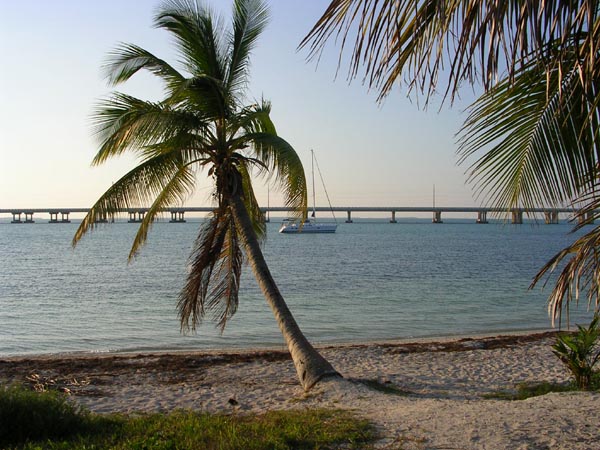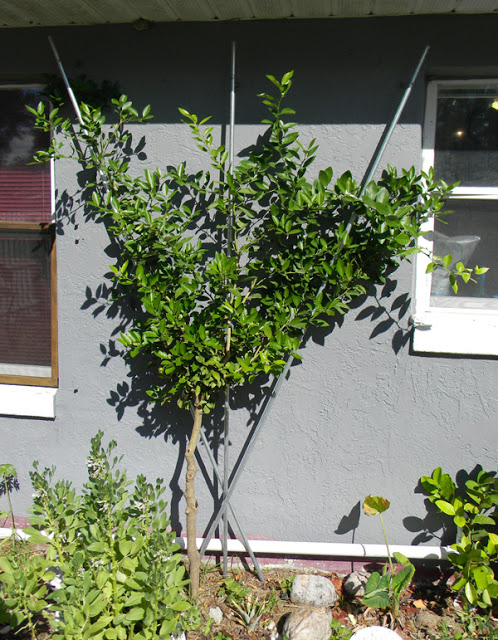Growing Key Limes in North Florida CAN be done!
In a previous post or two on microclimates, I’ve mentioned that I grow zone 10 plants in my zone 8b yard.
One tree that has a deep allure for gardeners is the Key Lime. This tree has almost an almost shamanistic pull upon anyone from about Broward County down south to the Keys. It represents the tropics. Margaritas. Salt breezes.
And of course – the king of all citrus confections – Key Lime pie.
Basically, Key Limes =
The problem is: Key Limes can’t stand freezing since they’re one of the most tropical of all citrus. Up here, the poor trees will freeze to the ground ever year, then limp back with a foot or two of growth, only to get knocked down again. Growing them without protection is impossible – and growing them with protection is risky and time consuming. Can you really be at your house for every frost? Will you remember to wrap your viciously thorny Key Lime tree with Christmas lights and cover it with blankets? Will you watch the weather like a hawk all winter?
Like I said – it’s time consuming… and I really don’t want to bother. So… here’s my method.
How To Grow a Key Lime in North Florida
Fortunately, I’ve found a way that works without all that trouble. I grow my Key Lime tree outside and unprotected and it’s doing great.
Here it is this very February, after we’ve had close to ten freezes:
I’m sure there’s a prettier way to pull this off – but I can’t argue with the results. There’s a lot of tender new growth right now that hasn’t been touched in the slightest by cold.
You know… I think I might need to set a few conch shells down to match the coconuts (sadly, imported from south Florida) at the base of that tree.




12 comments
or, if your grafted orange tree dies, you can always make sour orange pie.
I've been growing a couple of Mexican limes in my cubicle at work for years. Astonishingly they seem to be self-fertile and regularly drop ripe limes on my desk and my cube neighbor's desks.
Good thing you're not growing a coconut.
When I first moved to north-central Florida, in my ignorance, I planted a few key lime seeds directly in the ground, in the most open, exposed area of the yard. It sprouted, grew to about 8", then died in the winter freeze, despite my attempts to shield it.
Then, in the summer, it sprouted again from the bottom, growing to over a foot before repeating its winter performance. It did the same for the following 4 years growing about 3-4" higher each time. Its final iteration has it up over 3" tall, and I'm waiting to see if it springs to life again after this past winter. So far, no fruit, but I am just curious to see how this story ends.
I'm amazed that thing is still kicking. One day it may overcome its hellish life and bear fruit…
I was thinking of building a block wall 8ft high and painting it black to try to get my Bananas to fruit. What you think?
Do it! You might also stack some dirt on the other side, and give it some overhang to protect them from the cold of a clear, frosty night sky.
Oh sorry I live in Crawfordville fl. Just below tally.
You can totally grow bananas there – it's just not as easy as it is down in the far south of the state. Try Raja Puri, finger bananas and "Ice Cream" bananas… all three are supposed to be more tolerant of the cold. My big problem is losing the blooms and young fruit to frost. It's hard to get bananas to fruit when you want them to.
Here in Grenada banana trees grow all over the place 365 days/year. Good energies to you growing banana trees in N Florida.
Grenada is a wonderful place… the bananas there taste incredible, as well as being amazingly productive thanks to the perfect climate. Thanks for stopping by.
[…] You can do a lot more with trees than you think. Just because something has a “maximum height” listed on the label, it doesn’t mean it needs to get that big. You can prune potentially massive Ficus trees into hedges, and you can grow mango trees in pots. You can make pear trees short enough to step over, and you can train a key lime tree to a wall many miles north of its growing zone. […]
Comments are closed.